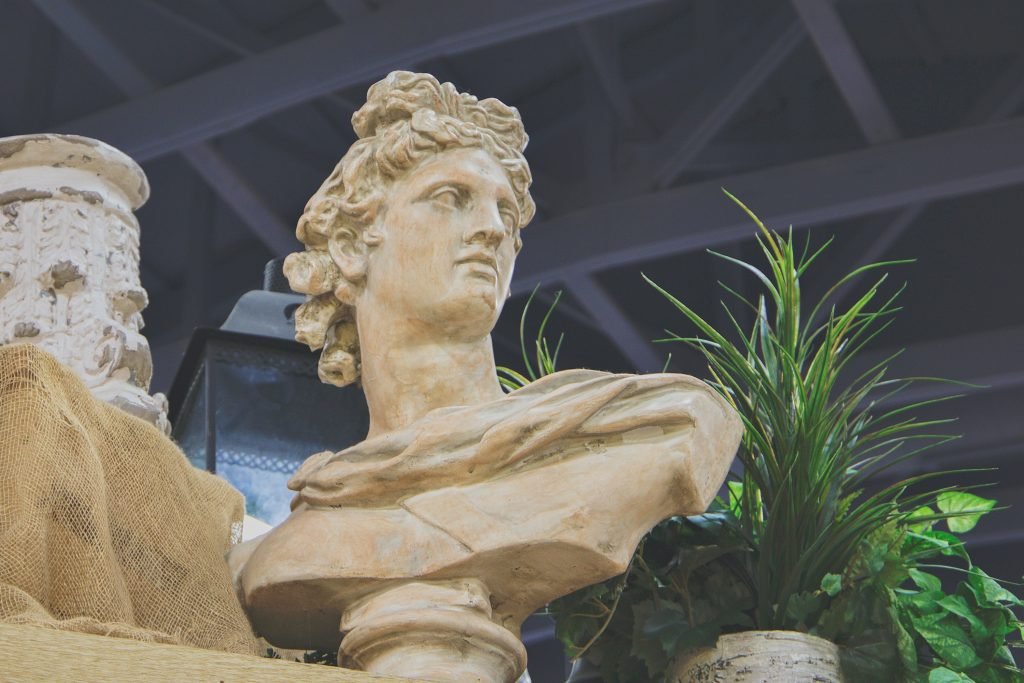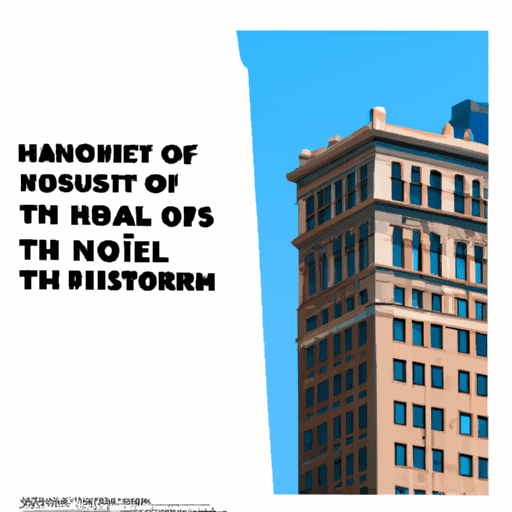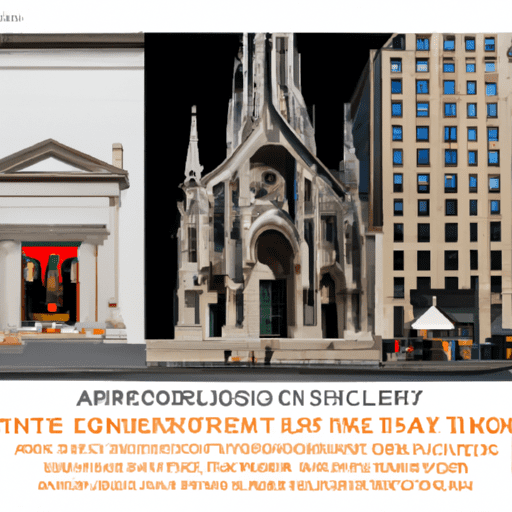In the bustling metropolis of New York City, a captivating fusion of past and present awaits you. The article “Blending History And Modernity: Historical Landmarks And Contemporary Architecture In New York” takes you on a journey through the city’s unique architectural landscape, where stunning historical landmarks seamlessly coexist with cutting-edge contemporary structures. From iconic sites like the Statue of Liberty and Empire State Building to the sleek lines of the One World Trade Center, this article uncovers the enchanting blend of history and modernity that defines the architectural fabric of the Big Apple. Explore the rich tapestry of New York City’s architectural heritage and be captivated by the harmonious collision of the old and the new.
Historical Landmarks in New York
New York City is known for its rich history and iconic landmarks that attract millions of visitors each year. From the towering Statue of Liberty to the historic grandeur of Grand Central Terminal, these landmarks tell the story of New York’s past and hold a special place in the hearts of both locals and tourists. Let’s take a closer look at some of the most prominent historical landmarks in New York.
The Statue of Liberty
The Statue of Liberty stands tall and proud on Liberty Island, serving as a symbol of freedom and opportunity. This colossal neoclassical sculpture was a gift from France to the United States, and it was dedicated in 1886. With its iconic torch held high, the Statue of Liberty has become an unmistakable symbol of New York City.
Ellis Island
Next on our journey through New York’s historical landmarks is Ellis Island. Situated in Upper New York Bay, Ellis Island served as the nation’s busiest immigration inspection station from 1892 to 1954. It is estimated that over 12 million immigrants were processed at Ellis Island during this time, seeking a new life in the United States. Today, the island serves as a museum and monument, allowing visitors to learn about the immigrant experience and the history of American immigration.
Empire State Building
No visit to New York City is complete without a trip to the Empire State Building. Completed in 1931, this iconic Art Deco skyscraper stands at a staggering 1,454 feet, making it one of the tallest buildings in the city. For decades, the Empire State Building held the title of the world’s tallest building and continues to be an emblem of New York City’s skyline. With its observation decks offering breathtaking views of the city, it remains a must-visit destination for locals and tourists alike.
Brooklyn Bridge
Spanning across the East River, the Brooklyn Bridge is an engineering marvel and an enduring symbol of the city’s ingenuity. Completed in 1883, this suspension bridge connects the boroughs of Manhattan and Brooklyn, offering stunning views of the cityscape. The Gothic-inspired architecture of the bridge adds to its charm, while its functional purpose has made it a vital transportation route for New Yorkers for over a century.
Grand Central Terminal
Grand Central Terminal is not just a transportation hub but also a historical landmark that showcases the Beaux-Arts architectural style. Opened in 1913, it has since been a bustling hub of activity, connecting millions of commuters and travelers each day. Grand Central Terminal blends both historical charm and modern functionality, making it a true testament to New York City’s ability to preserve its architectural heritage.
Contemporary Architecture in New York
While New York City is steeped in history, it also boasts a vibrant contemporary architectural scene. From the gleaming glass facade of One World Trade Center to the urban oasis of the High Line, these modern structures complement the city’s historic landmarks. Let’s explore some of the standout examples of contemporary architecture in New York.
One World Trade Center
As the centerpiece of the rebuilt World Trade Center complex, One World Trade Center stands as a symbol of resilience and hope. Completed in 2014, this impressive skyscraper soars 1,776 feet into the sky, paying tribute to the year of America’s independence. The architectural design seamlessly blends modernity with symbolism, creating a visually striking structure that serves as a testament to the strength of the human spirit.
High Line
The High Line is a unique example of contemporary architecture that repurposes an abandoned elevated railway into a public park. This urban oasis stretches for 1.45 miles along Manhattan’s West Side and offers visitors a peaceful escape from the city’s hustle and bustle. With landscaped gardens and art installations, the High Line showcases the possibilities of combining modern design with environmental sustainability.
The Vessel
A recent addition to New York City’s contemporary architectural landscape, the Vessel is a spiral staircase-like structure made up of interconnecting staircases and platforms. Located in the Hudson Yards neighborhood, it serves as both a work of art and an interactive experience for visitors. Designed by Thomas Heatherwick, the Vessel offers breathtaking views of the city and has quickly become an Instagram-worthy attraction.
The Shed
The Shed is a cultural center located in the Hudson Yards neighborhood that houses various forms of artistic expression. Its flexible and adaptable design allows it to transform into different configurations to accommodate different performances, exhibitions, and events. The Shed’s modern architecture serves as a fitting backdrop for the diverse cultural experiences it offers to both locals and visitors.
The Edge
The Edge, located at Hudson Yards, is the highest outdoor sky deck in the Western Hemisphere. Standing at 1,131 feet, this observation deck provides unparalleled views of the city. Its sleek and modern design offers visitors a chance to experience New York City from a whole new perspective. The Edge perfectly exemplifies the merging of modern architecture and innovation in the city.

Preserving History in Modern Architecture
Amidst the rapid pace of development and construction in New York City, it is essential to find ways to preserve the city’s rich architectural history. Incorporating historical elements in new buildings, restoring and repurposing historic structures, and creating architectural harmony in a modern landscape are key strategies employed to maintain the city’s unique character.
Incorporating Historical Elements in New Buildings
One way architects in New York City preserve history in modern architecture is by incorporating historical elements in new buildings. This technique allows new structures to pay tribute to the city’s architectural heritage while still embracing contemporary design principles. By featuring materials, motifs, or styles reminiscent of the past, architects create a visual dialogue that connects the old and the new.
Restoring and Repurposing Historic Structures
Restoration and repurposing of historic structures have played a crucial role in preserving New York City’s architectural gems. Rather than tearing down these buildings, they are carefully restored to their former glory, breathing new life into their historical significance. By repurposing these structures for new uses, such as transforming old warehouses into trendy loft apartments or turning abandoned factories into vibrant cultural spaces, the city can retain its historical character while accommodating modern needs.
Creating Architectural Harmony in a Modern Landscape
Creating architectural harmony in a modern landscape is key to maintaining the visual cohesion of a city as it evolves. This approach involves thoughtful urban planning and design that respects the existing architectural fabric while allowing for contemporary structures to flourish. By carefully considering building heights, materials, and styles, architects and city planners can create a balance between the old and the new, ensuring that modern architecture enhances rather than detracts from the city’s historical charm.
The Statue of Liberty
Historical Significance
The Statue of Liberty holds immense historical significance as a symbol of freedom and democracy. Given to the United States by France in 1886, it was meant to commemorate the ties between the two countries and the shared values of liberty and independence. Over the years, it has stood as a beacon of light and a symbol of hope for immigrants arriving in America, seeking a better life.
Architectural Features
The architectural features of the Statue of Liberty are impressive in their grandeur and attention to detail. The statue itself is built primarily of copper, with the inner framework crafted from iron. Standing at 305 feet tall, it is a true masterpiece of neoclassical design. The statue’s crown is adorned with seven rays representing the seven continents, while her right hand holds a torch that symbolizes enlightenment.
Modern Enhancements
In recent years, several modern enhancements have been made to the Statue of Liberty to ensure its preservation and accessibility for visitors. In 2019, a new Statue of Liberty Museum was opened on Liberty Island, providing a state-of-the-art facility to educate visitors about the statue’s history and significance. Additionally, efforts have been made to improve the infrastructure and visitor experience, including upgrades to the statue’s lighting and audio tour systems.

Ellis Island
Role in Immigration History
Ellis Island holds a significant place in American history as the gateway to the United States for millions of immigrants. From 1892 to 1954, it served as the primary immigration processing center, where people from all over the world arrived in search of a better life. During this time, Ellis Island witnessed the arrival and processing of over 12 million immigrants, making it a symbol of hope and opportunity for so many.
Architectural Design
The architectural design of Ellis Island is a testament to the efficiency and functionality required to process large numbers of immigrants. The main building, known as the Ellis Island Immigration Museum, features a Beaux-Arts style that reflects the architectural trends of the early 20th century. Its grand halls, intricate tilework, and soaring ceilings all contribute to the historic ambiance of the site.
Adaptations for Contemporary Use
Although Ellis Island stopped processing immigrants in 1954, the buildings have been adapted for contemporary use. Today, the Ellis Island Immigration Museum stands as a museum and educational center that tells the story of American immigration. Visitors can explore the various exhibits that chronicle the experiences of those who passed through Ellis Island and gain a deeper understanding of the nation’s diverse heritage.
Empire State Building
Iconic Status
The Empire State Building has achieved iconic status in the realm of architecture, thanks to its enduring presence and recognition. Upon completion in 1931, it held the title of the world’s tallest building, a distinction that lasted for nearly forty years. The building’s iconic silhouette and prominent position in the New York City skyline have made it a symbol of the city itself.
Art Deco Design
The Empire State Building is a beautiful example of Art Deco design, a style that was popular in the 1930s. The building’s exterior showcases sleek, clean lines, and intricate geometric ornamentation. Inside, the Art Deco elements continue with ornate motifs, embellishments, and vibrant colors. The attention to detail and fine craftsmanship of the building’s design contribute to its status as a beloved architectural gem.
Modernization Efforts
Over the years, the Empire State Building has undergone modernization efforts to ensure its relevance and sustainability. Eco-friendly initiatives have been implemented, including the installation of energy-efficient windows and the creation of a comprehensive recycling program. Additionally, the building’s observation decks have been renovated to offer visitors an enhanced experience, complete with interactive exhibits and stunning panoramic views.

Brooklyn Bridge
Engineering Marvel
The Brooklyn Bridge is not only an architectural marvel but also an engineering triumph. When it opened in 1883, it was the longest suspension bridge in the world, spanning over 1,595 feet. Its construction was an incredible feat of engineering, with innovative techniques and materials utilized. The bridge’s main towers and suspension cables are a testament to the ingenuity and skill of the engineers and builders involved in its creation.
Gothic-Inspired Architecture
The architectural design of the Brooklyn Bridge draws inspiration from the Gothic style, characterized by its pointed arches and intricate detailing. The bridge’s towers feature stunning stone and granite facades, adorned with beautiful ornamental flourishes that evoke a sense of grandeur. These Gothic elements not only enhance the bridge’s visual appeal but also pay homage to the historical architectural motifs that were popular during its construction.
Sustaining Legacy through Modern Restoration
To ensure the Brooklyn Bridge’s continued legacy, various restoration efforts have been undertaken throughout the years. Regular inspections and maintenance help preserve the bridge’s structural integrity, while periodic restorations aim to maintain its original aesthetic beauty. These restoration projects include repainting the bridge’s iconic towers, repairing or replacing deteriorating components, and ensuring the bridge remains safe and accessible for pedestrians and vehicles alike.
Grand Central Terminal
Historical Background
Grand Central Terminal, often referred to as Grand Central Station, has a rich and storied history. Originally opened in 1871, the original terminal underwent significant renovations and expansions before being demolished and replaced in the early 20th century. The current Grand Central Terminal, opened in 1913, is an architectural masterpiece that has become an integral part of New York City’s identity.
Beaux-Arts Style
Grand Central Terminal showcases the Beaux-Arts architectural style popular during the early 20th century. This style emphasizes grandeur and elegance, combining classical and Renaissance elements with modern innovations. The terminal’s main concourse is a magnificent space adorned with marble floors, majestic arched windows, and a beautifully painted astronomical ceiling. The attention to detail in the design creates a sense of awe and admiration for the terminal’s architectural splendor.
Adaptive Reuse and Modernization
In addition to preserving its historic charm, Grand Central Terminal has embraced adaptive reuse and modernization to ensure its continued relevance. The terminal serves as a crucial transportation hub, connecting commuters to various train lines, while also hosting an array of shops, restaurants, and cultural attractions. Modernization efforts have focused on improving accessibility and enhancing the terminal’s sustainability, all while respecting its architectural integrity.

One World Trade Center
Symbolism and Memorial
One World Trade Center, often referred to as the Freedom Tower, is a powerful symbol of resilience and remembrance. It was built to replace the Twin Towers destroyed in the September 11, 2001 terrorist attacks, and as such, it stands as a testament to the strength of the human spirit. The tower also incorporates design elements that pay tribute to the victims of the attacks, including the 9/11 Memorial and Museum located nearby.
Impressive Architectural Design
One World Trade Center’s architectural design is both striking and innovative. The tower’s glass facade gleams in the sunlight, reflecting the changing colors of the sky. The building’s triangular shape provides an elegant and distinctive silhouette, while the spire that reaches a height of 1,776 feet is a representation of America’s independence. The careful attention to design ensures that One World Trade Center stands out among the city’s skyline and serves as a beacon of hope for all who encounter it.
Sustainable Features
In addition to its architectural significance, One World Trade Center also incorporates sustainable features that align with modern environmental standards. The building utilizes energy-efficient systems and technologies to conserve resources and reduce its carbon footprint. The glass curtain wall is designed to maximize natural light while minimizing heat gain, contributing to the tower’s overall sustainability. These sustainable features demonstrate a commitment to both architectural excellence and environmental responsibility.
Creating Architectural Harmony in a Modern Landscape
Balancing Historical and Modern Design Aesthetics
Creating architectural harmony in a modern landscape requires a delicate balance between respecting the historical context and embracing contemporary design aesthetics. By incorporating elements of the past, such as utilizing similar materials or architectural styles, modern structures can integrate seamlessly into their surroundings. This approach ensures that new developments pay homage to the city’s history while adding to its vibrant and evolving architectural tapestry.
Ensuring Functional Integration
Achieving architectural harmony is not just about visual aesthetics but also requires ensuring functional integration with the existing city infrastructure. New buildings and landmarks must be designed to support and enhance the surrounding transportation systems and public spaces. By considering the needs and flow of pedestrians, cyclists, and vehicles, architects can create structures that contribute positively to the city’s overall urban landscape.
Promoting Cultural Identity and Heritage
Architecture plays a vital role in promoting and preserving a city’s cultural identity and heritage. By incorporating elements of local history, traditions, and cultural symbolism, new buildings can celebrate the unique character of the community they inhabit. This approach fosters a sense of pride and connection among residents while offering a distinctive experience to visitors. By embracing local culture, contemporary architecture can become a reflection of the city’s identity and contribute to its ongoing cultural narrative.
In conclusion, New York City is a treasure trove of historical landmarks and contemporary architectural marvels. From the enduring symbols of the Statue of Liberty and Ellis Island to the modern wonders of One World Trade Center and the High Line, these structures embody the city’s spirit and ambition. By preserving history in modern architecture, New York City strikes a delicate balance between honoring its past and embracing the future. The architectural harmony achieved in this dynamic landscape not only captivates the eye but also serves as a testament to the city’s rich heritage and enduring legacy.

